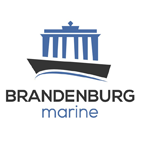An essential safety measures and procedures for managing the risks of cargo liquefaction and dynamic separation during voyages.
Actions if liquefaction or dynamic separation is detected during the voyage
An essential safety measures and procedures for managing the risks of cargo liquefaction and dynamic separation during voyages.
Actions if liquefaction or dynamic separation is detected during the voyage
According to Britannia, the Safety Management System (SMS) on ships carrying solid bulk cargoes should include procedures for managing cargo liquefaction and dynamic separation. These issues can develop rapidly, particularly in adverse weather conditions. The SMS procedures, as well as the training provided to officers and crew should consider the following points:
- When a ship is loaded with cargo presenting the risk of liquefaction or dynamic separation, rolling should be kept to a minimum as far as possible
- The ship’s rolling period in its current loading condition should be known, recorded, and monitored. Resonance with the sea or swell frequency can promote liquefaction and should be avoided whenever possible
- In cases of dynamic separation, the sloshing of slurry on top of the cargo may result in an uncharacteristic motion, disrupting the regular rolling rhythm due to different wave periods of the slurry in each hold. Any irregular rolling should be investigated
- Any indication of the ship developing a list should be noted, reported and recorded together with details of the rolling period and its characteristics (irregular, asymmetric, etc.)
- Route planning and weather avoidance should be executed to avoid heavy weather and excessive rolling
- If safe and permitted by weather, the cargo surface should be regularly examined for change, such as accumulation of water, collapse, or shifting. Keeping a photographic record will assist in detecting changes between examinations
- Where abnormalities or indications of liquefaction/dynamic separation are detected, the appropriate crisis response should be triggered and assistance from shore-based experts sought.
If liquefaction/dynamic separation of the cargo is occurring:
- The master/shipowner should immediately follow the emergency notification procedure
- The crew should prepare for immediate evacuation and remain in readiness until the situation is under control
- The SMS should assist the master in evaluating whether it is safe to remain on board
- Speed and course should be adjusted to minimise the ship’s rolling movement as far as possible
- If possible, the ship should proceed to a sheltered area or a port of refuge.



